Diceva di chiamarsi Aina ...
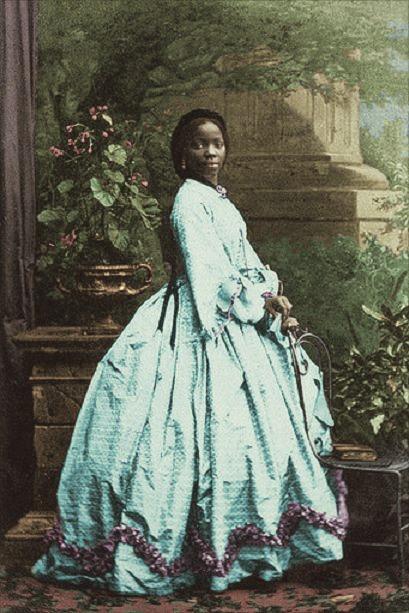
Lady Sarah Forbes Bonetta by Camille Silvy, 1862
e di certo si sapeva che era nata nel 1843 in quella che era allora conosciuta come la 'Costa degli schiavi', ovvero la zona sud orientale dell'odierno stato della Nigeria ... che era una principessa del clan Egbado del popolo Yoruba, fatta schiava dal re Gezo di Dahomey il quale, dopo aver attaccato in un bagno di sangue il suo villaggio nel 1847, uccise entrambi i suoi genitori e tutti i suoi fratelli.
Quando due anni più tardi il Commodore Fredrick E. Forbes di H.M.S., inviato da Sua Maestà la Regina Victoria per perseguire il commercio degli schiavi ed eliminare la schiavitù da quelle zone così tanto provate, atterrò a Dahoney, fu subito colpito dalla fanciulla e negoziò con il re affinchè le venisse consegnata:
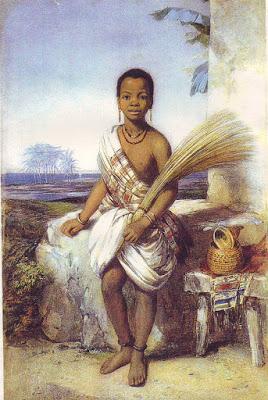
Aina, acquerello by Octavius Oakley, RWS (1800 - 1867)
"Un dono del re dei neri alla regina dei bianchi" furono queste le parole con cui il re tiranno consegnò la piccola, sola, indifesa e spaventata tra le braccia del Capitano della fregata Bonetta ... " Rifiutare avrebbe significato il firmare la sua condanna a morte, la quale, probabilmente, sarebbe stata eseguita immediatamente. Subito dopo il mio arrivo ...
Della sua propria storia ella possedeva solo un'idea confusa. I suoi genitori erano stati decapitati; il destino del fratello e le sorelle ignora quale sia stato." scrisse il Capitano Forbes tra le pagine del suo diario ; Sarah fu il nome che questi scelse per lei, per la nuova vita che l'attendeva in Inghilterra, Forbes era il suo stesso cognome, che volle estendere alla fanciulla, quasi come se si sentisse autorizzato da una qualche sorta di paternità spirituale, e Bonetta era il nome della fregata su cui ella avrebbe viaggiato verso il suo nuovo mondo, dove l'attendeva quella civiltà e quell'amore che mai aveva conosciuto ( è tuttavia facile trovare documenti in cui i suoi cognomi hanno ordine inverso ).
Dopo un anno di navigazione durante il quale il Capitano Forbes concluse il proprio mandato, Sarah raggiunse con lui Londra: era il 9 novembre del 1851 quando la Regina Victoria ed il principe consorte Albert l'accolsero a Buckingham Palace e subito, entrambi, provarono quella tenerezza, che si fece immediatamente amore e bisogno di proteggere, la piccola, incantevole orfana dalla pelle scura e giurarono a sé stessi che da quel giorno di lei si sarebbero presi cura: rimasti entrambi impressionati dalle facoltà intellettive della piccola che divenne presto un'assidua frequentatrice del palazzo reale - già Forbes scriveva di lei sul suo diario: "Ella è un genio perfetto; ora parla bene l'inglese, e possiede un grande talento per la musica ... E' di gran lunga in anticipo rispetto a qualsiasi bambino bianco della sua età in quanto ad apprendimento, a forza d'animo ed affetto ... " - decisero di finanziare le spese necessarie per la sua istruzione e la regina nominò Sarah sua figlioccia.
Dopo poco meno di un anno dal suo arrivo a Londra la piccola fu affetta da una tosse insistente, che peraltro caratterizzava tutte le persone di colore che abitavano le città dell'isola britannica, forse dovuta al suo clima governato precipuamente dall'umidità, forse dovuta alle polveri di carbone che le prime industrie spargevano nell'aria, sta di fatto che Victoria pensò bene che per Sarah fosse più salutare un clima quale quello della Sierra Leone, dove venne quindi inviata e dove fu istruita al Female Institution, un istituto scolastico promosso e curato dalla Chiesa Missionaria a Freetown.
Ma Sarah avvertiva la mancanza della vicinanza e dell'affetto della regina che le aveva donato la sua nuova vita, alla quale chiese di essere ricondotta in patria già nel 1855; aveva quindi dodici anni quando fece ritorno in Inghilterra e venne affidata alle cure di Mr & Mrs Schon a Chatam, essendo nel frattempo venuto a mancare il Capitano Forbes.
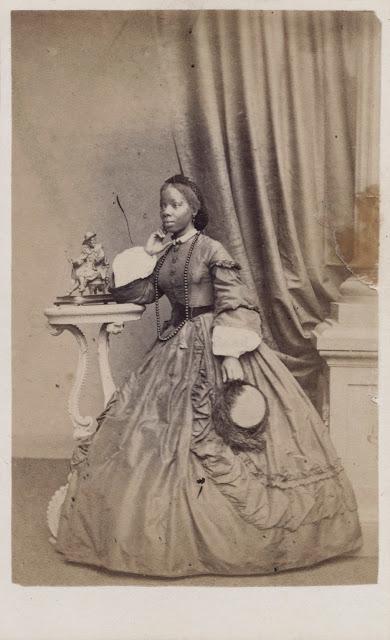
Lady Sarah Forbes Bonetta by Camille Silvy, Brighton, 1862Nel 1862 troviamo la diciannovenne Sarah, già adulta ed educata come una vera Lady al punto da essere stata inserita dalla regina nei ranghi più elevati della società londinese, tra gli invitati al matrimonio della principessa Louise e nell'agosto del medesimo anno ella stessa contrasse matrimonio, dapprincipio dimostrando una certa ostilità, poi cedendo al volere della regina, con James Pinson Labulo Davies, un facoltoso uomo d'affari Yoruba che viveva in Gran Bretagna ( Sarah aveva 19 anni, James ne aveva 34, quasi una generazione per la loro cultura li separava ed era probabilmente questo il motivo della sua iniziale contrarietà ).
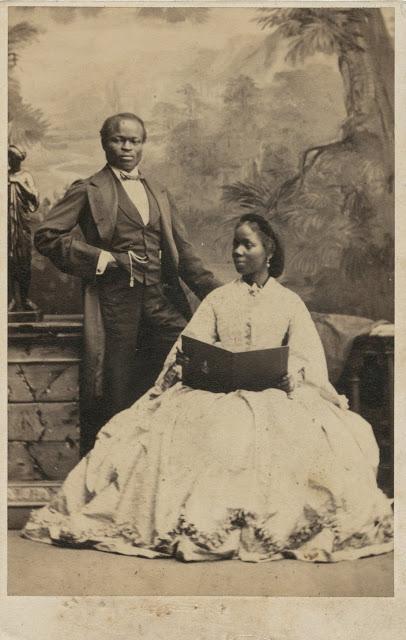
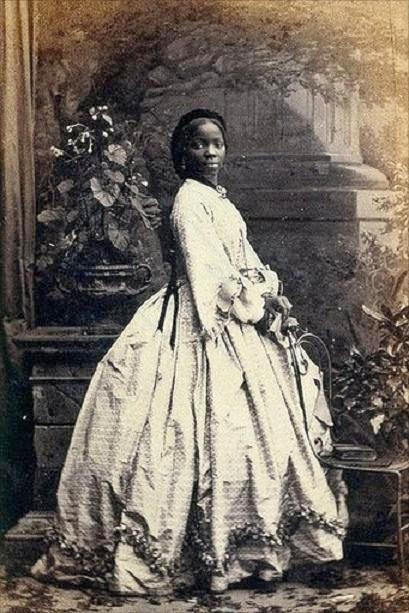
Si racconta che il suo sia stato realmente un matrimonio indimenticabile: dopo mesi di preparativi esso venne celebrato nella Chiesa di St Nicholas' a Brighton ed ella era accompagnata da 16 damigelle e seguita da 10 carrozze in cui si distinguevano Ladies bianche con mariti africani e viceversa, Gentlemen bianchi con mogli africane.
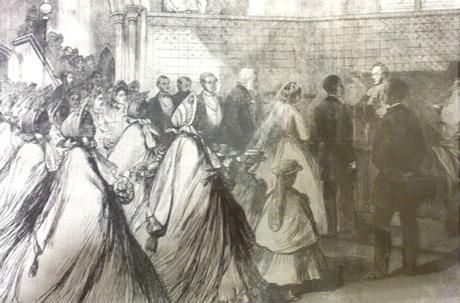
Poco dopo il matrimonio la coppia si trasferì in Nigeria, dove James era stato nominato membro del Consiglio legislativo e dove nacquero i tre figli di Sarah, Victoria (1863), Arthur (1871), e Stella (1873); non è un caso che la prima bimba che ella diede alla luce recasse il nome della regina: ella espresse infatti a Sua Maestà il desiderio di averla come madrina anche della sua prima figlia ed Ella, onorata, acconsentì con piacere.
Frattanto la tosse di Sarah non solo non diede segno alcuno di miglioramento, ma continuò a peggiorare e fu così che su consiglio di Sua maestà ella venne condotta dal marito a Madeira, per l'esattezza presso Funchal, la capitale dell'isola portoghese in cui era viva la speranza di strapparla alla tubercolosi da cui si era scoperto ella era stata affetta, ma, dopo una breve sofferenza, la povera principessa, dopo aver sognato la felicità, si spense all'età di soli 37 anni.
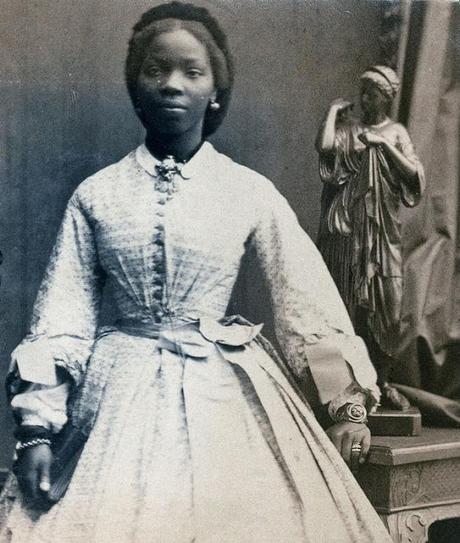
Il 15 agosto del 1880, la regina Victoria annoterà tristemente nel suo diario :
"Ho appena visto la povera Victoria Davies, la mia figlioccia di colore, che ha appreso questa mattina della morte della sua cara mamma".
La Regina Victoria era molto affezionata alla sua seconda figlioccia, intelligente e talentuosa come la madre, che seguiva con amore al punto che, con orgoglio e fierezza, quando ella superò brillantemente i suoi esami di musica, proclamò un giorno di vacanza per gli insegnanti e gli alunni !
Spero che la storia di Sarah, anche se non a lieto fine, ahimè, abbia interessato voi quanto ha incuriosito, interessato ed affascinato me, ponendomi di fronte ad uno spaccato della società vittoriana londinese che mi è apparso nuovo, poiché supponevo che al tempo le persone di colore, anche in Inghilterra, non fossero trattate alla stregua delle altre autoctone e che ancora vigesse una qualche forma di intolleranza nei loro confronti, come in quegli anni stava accadendo in America e continuerà ad accadere ancora fino a che il presidente Abraham Lincoln non deciderà di fermare il corso di questa loro triste storia.
Prendo quindi congedo da voi, carissimi amici e lettori, non senza, però, avervi prima augurato ogni bene, con affetto e riconoscenza, dandovi appuntamento
a presto ♥
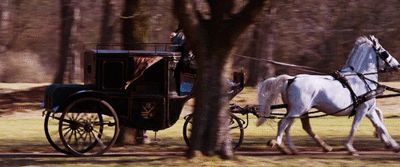

BIBLIOGRAFIA:
Walter Dean Myers, At Her Majesty's Request: An African Princess in Victorian England, Scholastic Trade, New York, First Edition First Printing 1999.
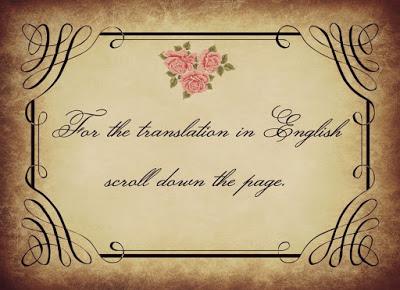
She said her name was Aina ...
- picture 1 - Lady Sarah Forbes Bonetta by Camille Silvy, 1862
and for sure they knew that she was born in 1843 in what was then known as the 'Coast of the slaves', which was situated in the south eastern part of today's state of Nigeria ... it was a Egbado clan princess of the Yoruba people, made enslaved by King Gezo of Dahomey who, after attacking in a bloodbath her village in 1847, he killed both her parents and every sibling of hers.
When two years later the Commodore Fredrick E. Forbes HMS, sent by Her Majesty Queen Victoria to pursue the slave trade and to eliminate slavery from those areas, landed in Dahoney, he was immediately struck by the little girl and negotiated with the King:
- picture 2 - Aina when the Captain Forbes saw her for the first time, water colour by Octavius Oakley RWS (1800 - 1867)
"A gift from the King of the Blacks to the Queen of the Whites" these were the words with which the tyrant King handed the small, alone, helpless and frightened baby girl in the arms of the captain of the frigate Bonetta ... "To refuse would have meant signing her sentence to death, which probably would have taken place immediately.... Of her own story she had only a confused idea. Her parents had been beheaded; she ignored what the fate of her brother and sisters was." Captain Forbes wrote in the pages of his diary; Sarah was the name he chose for her, for the new life that awaited her in England, Forbes was his own surname, which he would extend to the girl, almost as if he felt entitled to some sort of spiritual fatherhood, and Bonetta was the name of the frigate on which she would travel to her new world, where that civilization and love which she still never knew were waiting for her ( it's easy to find documents in which her surnames have the reverse order).
After a year of navigation during which the Captain Forbes concluded his mandate, Sarah reached London with him: it was November 9th, 1851 when Queen Victoria and the Prince Consort Albert received her at Buckingham Palace and at once, both proved that tenderness, which immediately became love and wish to protect the small, charming, dark-skinned orphan and swore to themselves that from that day they'd take care of her: both of them were impressed by the intellectual faculties of the little girls who soon became an assiduous frequenter of the royal palace - already Forbes wrote about her in his diary: "She is a perfect genius who now speaks English well, and has a great talent for music ... and she's by far in advance of any white child of her age as for learning attitudes, fortitude and affection ... "- and decided to finance the costs necessary for her education and soon the Queen appointed Sarah her goddaughter.
After less than a year since her arrival in London she was affected by a persistent cough, which also characterizes all the black people who lived in the British towns of the island, perhaps due to its climate primarily governed by moisture, perhaps due the coal dust that the first industries scattered in the air; the fact is that Victoria thought well that Sarah was healthier in a climate such as that of Sierra Leone, where she was then sent, and where she was educated at the Female Institution, promoted and managed by the Missionary Church in Freetown.
But Sarah noticed the lack of the closeness and of the affection of the Queen who had given her a new life, and so she asked Her to be brought back at home already in 1855; she had then twelve years old when she returned to England and was put in the care of Mr & Mrs Schon in Chatam, having Captain Forbes in the meantime passed away.
- picture 3 - Lady Sarah Forbes Bonetta by Camille Silvy, Brighton, 1862
In 1862 we find the nineteen years old Sarah, already an adult and educated as a true Lady to the point that she was positioned by the Queen in the highest ranks of the the Londoner society, among the guests at the wedding of Princess Louise and in August of the same year she herself was married , demonstrating some hostility at first, then yielding to the will of the Queen, with James Pinson Labulo Davies, a wealthy Yoruba businessman who lived in Britain (Sarah was 19, James 34, almost a generation separated them in their culture and this was probably the reason for her initial opposition)
- picture 4
- picture 5
It is said that her was truly an unforgettable wedding: after months of preparation it was celebrated in the Church of St Nicholas' in Brighton and she was accompanied by 16 bridesmaids and followed by 10 carriages in which were distinguished white Ladies with African husbands and vice versa, white Gentlemen with African wives.
- picture 6
Shortly after the marriage the couple moved to Nigeria, where James was nominated member of the Legislative Council and where their three children Victoria (1863), Arthur (1871) and Stella (1873) were born; it isn't a coincidence that the first child that Sarah gave birth to was named Victoria: she expressed to Her Majesty the desire to have Her as godmother of her first daughter too, and She, honored, consented with pleasure.
Meanwhile Sarah's cough didn't give any sign of improvement, but continued to worsen and so it was that on the advice of Her Majesty she was lead by her husband to Madeira, to be exact at Funchal, the capital of the Portuguese island, where it was alive the hope of tearing her from tuberculosis from which it was discovered she was suffering, but, after a short suffering, the poor princess, after dreaming of happiness, died at the age of just 37 years.
- picture 7
On 15 August 1880, Queen Victoria will write sadly in Her diary:
" Saw poor Victoria Davies, my black godchild, who learnt this morning of the death of her dear mother".
Queen Victoria was very fond with her second goddaughter, as intelligent and talented as her mother, who She followed with love to the point that, with pride, when she successfully passed her music exams, proclaimed a day of holiday for teachers and pupils !
I hope that the story of Sarah, though not happy ending, alas, has affected you as much as it intrigued, interested and fascinated me, placing myself in front of a view of London's Victorian society that appeared new to me, because I assumed that at that time people of color, even in England, were not treated in the same way as whites and still there was some form of intolerance towards them, as in those years was happening in America, and will continue to happen until President Abraham Lincoln won't decide to stop the course of this sad story of theirs.
So I take my leave of you, dearest friends and readers of mine, not without, however, having first wished all my best, with affection and gratitude, and giving you appointment at
very soon ♥
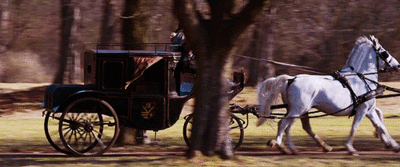

BIBLIOGRAPHY:
Walter Dean Myers, At Her Majesty's Request: An African Princess in Victorian England, Scholastic Trade, New York, First Edition First Printing 1999.

